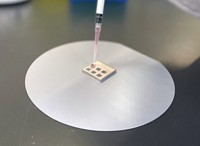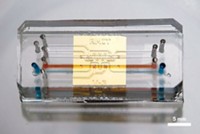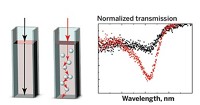Advertisement
Grab your lab coat. Let's get started
Welcome!
Welcome!
Create an account below to get 6 C&EN articles per month, receive newsletters and more - all free.
It seems this is your first time logging in online. Please enter the following information to continue.
As an ACS member you automatically get access to this site. All we need is few more details to create your reading experience.
Not you? Sign in with a different account.
Not you? Sign in with a different account.
ERROR 1
ERROR 1
ERROR 2
ERROR 2
ERROR 2
ERROR 2
ERROR 2
Password and Confirm password must match.
If you have an ACS member number, please enter it here so we can link this account to your membership. (optional)
ERROR 2
ACS values your privacy. By submitting your information, you are gaining access to C&EN and subscribing to our weekly newsletter. We use the information you provide to make your reading experience better, and we will never sell your data to third party members.
Analytical Chemistry
Magnetic Nanoparticles Spot Biomarker Needle In A Haystack
Biochemical Analytics: Biomarker molecules link up particles into detectable clusters
by Katharine Sanderson
March 23, 2012

Hunting through blood plasma for disease biomarker molecules can be tricky: The medium is crawling with many biomolecules. Researchers often have to purify the plasma before starting their search, which takes precious time. But now scientists have developed a way using magnetic nanoparticles to detect biomarkers in plasma in minutes (ACS Nano, DOI: 10.1021/nn204913f).
Menno Prins, of Philips Research, the research branch of the electronics company Philips, and his team showed that in just 14 minutes, they could pick out the prostate specific antigen (PSA), a biomarker for prostate cancer, at concentrations as low as 400 fM. Current PSA tests take several hours and can detect about 30 pM of the biomarker.
In the new method, the researchers spike plasma samples with magnetic nanoparticles coated with two types of antibodies. Both types bind PSA, but on different parts of the molecule. With these two antibodies, PSA molecules can bind to more than one nanoparticle, bridging them to form clusters. Unfortunately, low concentrations of both nanoparticles and PSA, as found in most plasma samples, makes the chance of two particles linking up quite low.
To improve the odds, Prins’s team applied a technique developed by Jean Baudry, of the City of Paris Industrial Physics and Chemistry Higher Educational Institution, to drive the particles to aggregate (Proc. Natl. Acad. Sci. U.S.A., DOI: 10.1073/pnas.0607991103). The researchers applied a magnetic field to the sample in on-and-off pulses. When the field is on, the nanoparticles line up in the direction of the field, and the PSA molecules link them together into rods. Then when the field is off, individual nanoparticles can disperse and grab hold of more PSA. By turning the field on and off, the particles make more and more links through the PSA molecules and the magnetic-field-induced rods grow. At the end of the sequence of pulses, the size of these rods is related to the amount of PSA in the plasma.
The researchers measure the size of these rods by shining light on the sample while applying a rotating magnetic field. As the rods rotate with the field, they scatter light. The light scattering is unique to the rods because they rotate at a different frequency from anything else in the plasma. The scientists can distinguish the PSA-linked particles from all the other material in blood plasma. They then use computer software to calculate the amount of PSA in the sample based on the light scattering data.
Prins, also of Eindhoven University of Technology in the Netherlands, and his colleagues tested the method using donor plasma samples spiked with known concentrations of PSA.
Baudry calls the technique clever and is particularly impressed by the addition of the rotating magnetic field to the detection step. It eliminates background signals, he says, which were a problem in previous methods.





Join the conversation
Contact the reporter
Submit a Letter to the Editor for publication
Engage with us on Twitter